Rowan's fossil park, museum rise at former marl pit: Here's a preview of what's to come
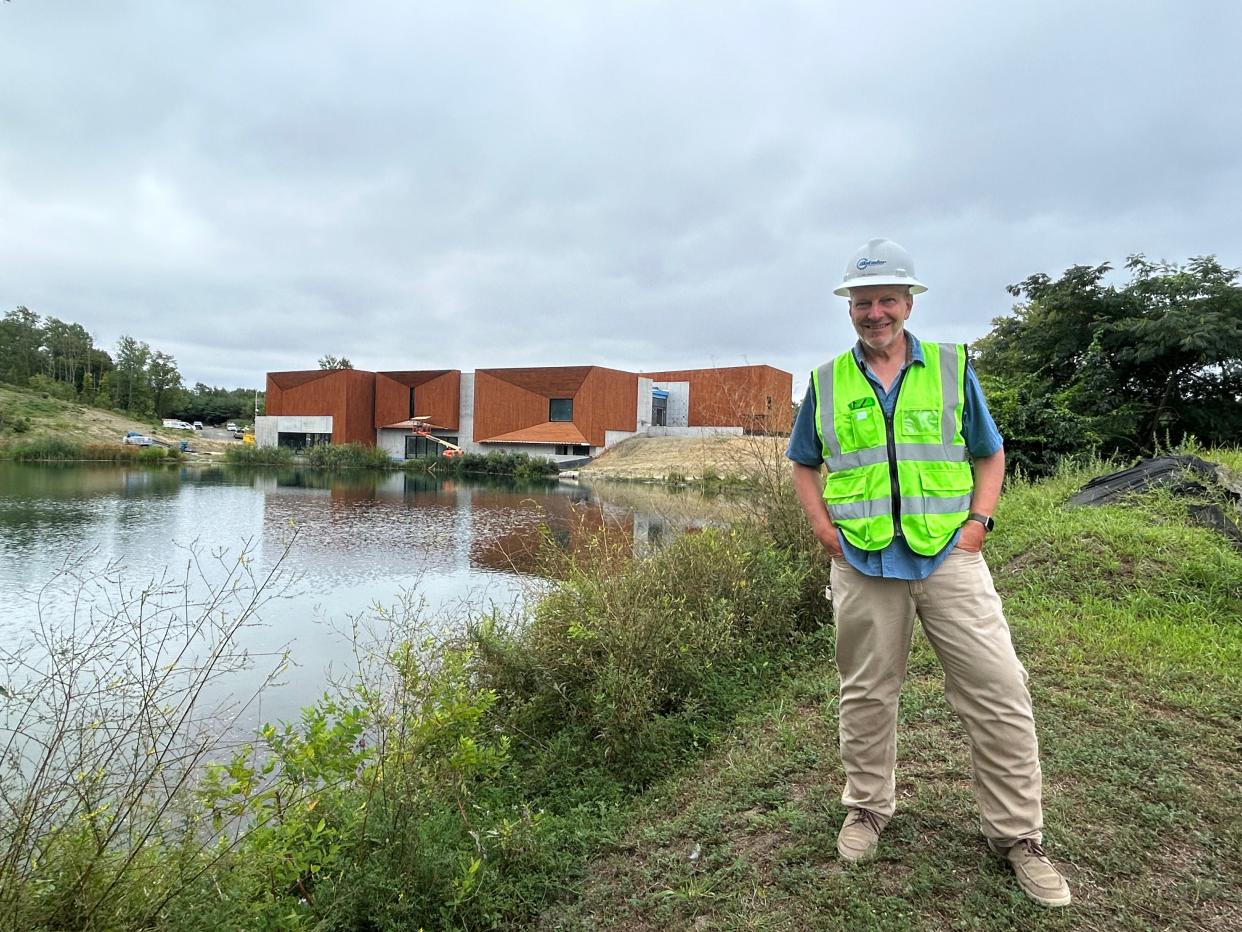
The museum building at the Jean and Ric Edelman Fossil Park of Rowan University, designed by Tom Wong and Ennead Architects, resembles a set of old-fashioned camera boxes, its lenses focused on a former marl pit whose prehistoric treasures are still being excavated.
But the emphasis here is not just on the past, said Dr. Ken Lacovara, a world-renowned scientist with South Jersey roots who's the driving force behind the fossil park.
"It's a metaphor," explained Lacovara as he gave the Courier-Post a tour of the site, still under construction but taking shape quickly ahead of its planned Spring 2024 opening.
"It's a lens to the past and the future. The lines and the window suggest perspectives — new ones and changing ones."
From our past: The Courier-Post covers community dig day in 2014
The future for the park begins in the spring, and already more than 600 schools and other groups are on a waiting list to visit. Some aren't waiting that long: At the conclusion of the Courier-Post's visit, a car pulled into the construction entrance, a woman at the wheel with two young children in the back, hoping to get a glimpse at some dinosaur bones and the people who discovered them.
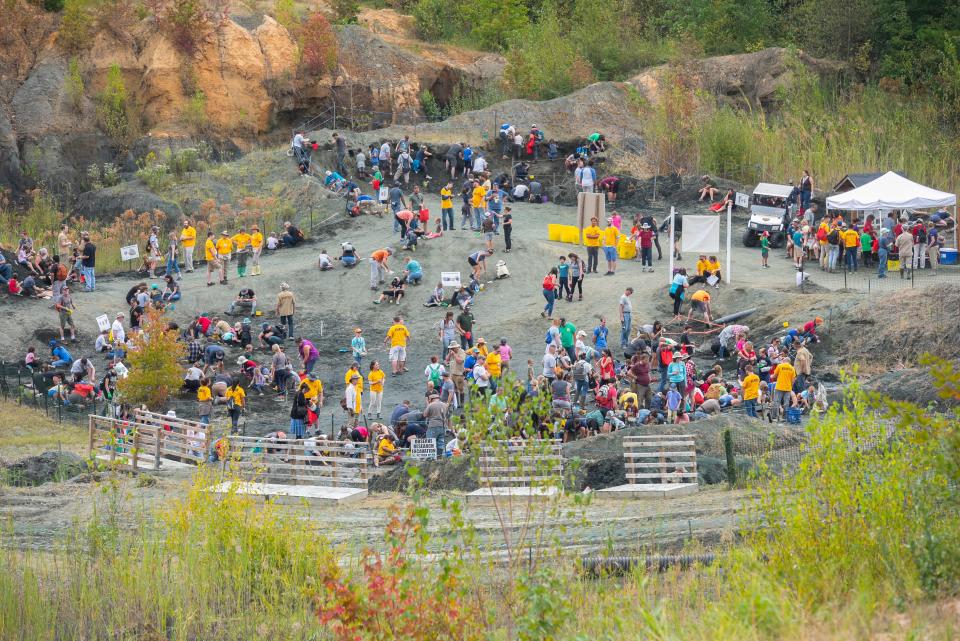
A 'Most Anticipated Museum' and more
There will be no fossil fuels used by the fossil park, said Lacovara, a Rowan University professor, clearly proud of how sustainability was a priority in its design. Geothermal energy will power the museum and when it opens, it will be New Jersey's largest carbon-neutral building.
Smithsonian Magazine counted the site among its Most Anticipated Museum openings in a January story. It won't just be a building, though.
Designed to appeal to little kids fascinated by dinos, environmentally-conscious students, serious researchers and everyone in between, the 65-acre site will be a place where people can appreciate nature in various ways: A playground welcomes kids; nature trails will wind around a lake and through the woods and quarry; a field station will offer people a chance to learn about the site and have their own fossil finds identified.
"There's a lot you can do here for free," said Lacovara.
More history: An Indigenous group acquires a preserve in South Jersey: What are their plans for it?
"This will be an international tourist destination," he continued, "that will bring millions of dollars into the community and into South Jersey. It's going to be a major cultural attraction, and make the region a more desirable place to visit, work and live."
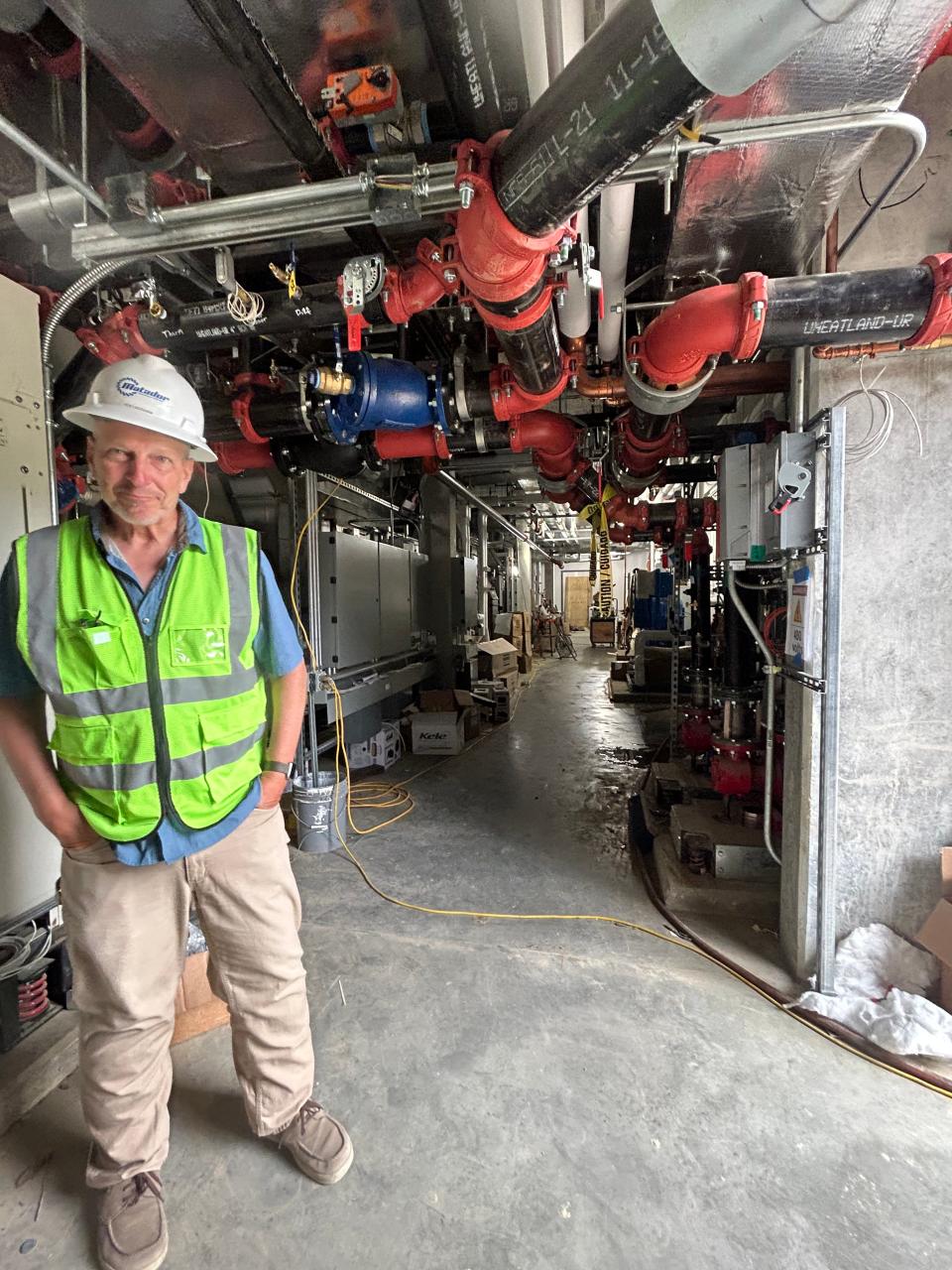
While part of the site will be "carefully curated and managed," Lacovara added that visitors will still be able to do their own digging, as well.
"Everyone who comes here gets to take home their very own fossil."
A sustainably built museum
The museum overlooks the empty quarry on one side, and a lake on the other. From the quarry side, it appears to be a one-story building, but its first floor is hidden, helping minimize the amount of energy needed for heating and cooling. Low wall-to-window ratios, accoya wood, the orientation of its veranda to maximize seasonal sunlight and reduced-carbon concrete are other features that make the museum more environmentally-friendly.
"We wanted minimal intrusion on the land," Lacovara said.
Windows use bird-safe glass — the paleontologist explained how birds' eyesight evolved differently than ours and while we see the glass, birds see what's reflected in it: the sky, the trees, the vegetation. Bird-safe glass has patterns in it that keep it transparent to us, but visible to birds.
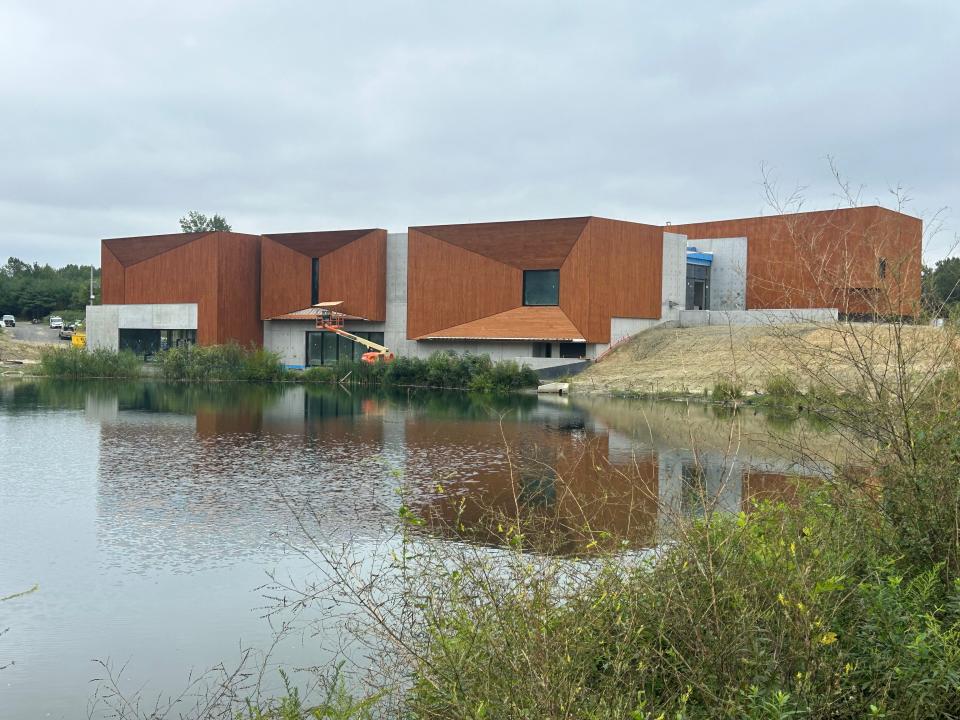
"It looks like spider webs to birds," Lacovara said, "and they won't fly into that."
That's crucial because, though there's a shopping center with a Target, Lowe's and other stores nearby, there are also more than 75 species of birds living in the wooded areas that surround the site.
The depth of the climate crisis is finally coming into focus for more people as hurricanes, floods, wildfires and other natural disasters make headlines. But another existential crisis, Lacovara said, is less well-known but no less destructive: the biodiversity crisis.
He's hopeful the museum's features will show others that it's possible to build something ambitious in an environmentally responsible — and economically viable — way. "We can get to carbon-zero with off-the-shelf products; it's just a matter of having the will to do it."
What's inside?
"I'm incredibly excited to be part of this," said Joe Alperstein with KSS Architects. "Every day, as another thing is installed, Ken's vision is being realized."
Lacovara and Alperstein were onsite for one of the periodic walk-throughs, meeting with workers with Joseph Jingoli & Son, the construction and engineering firm overseeing the project.
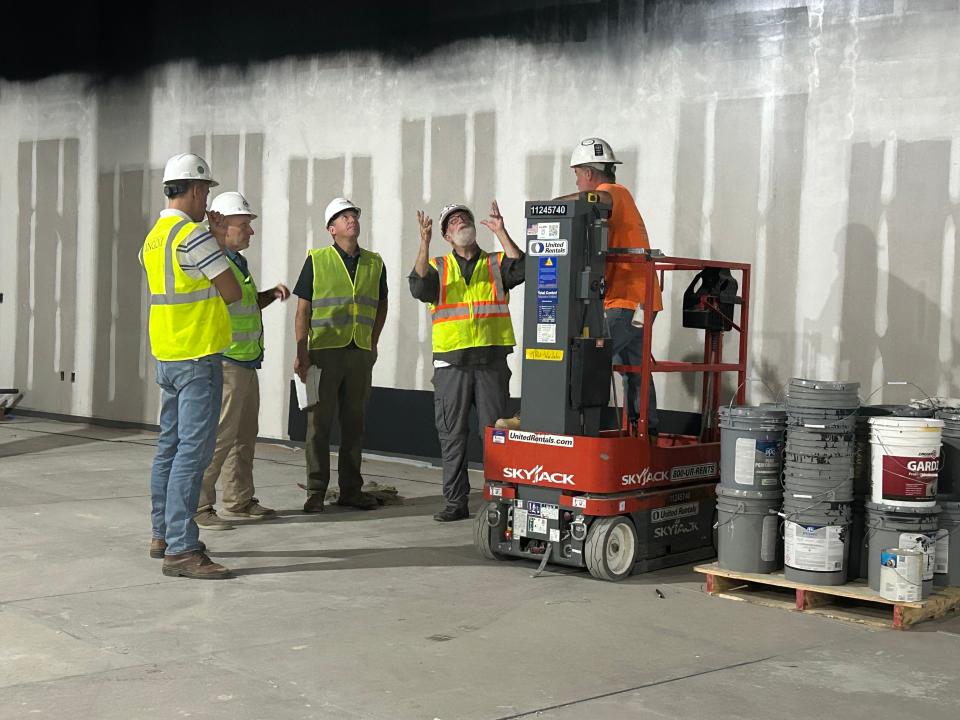
Inside the museum, of course, will be dinosaur fossils and models, including a giant mosasaurus, a sea creature from the Cretaceous Period, like all the fossils found at the site. A 120-seat theater, a veranda that looks out to the quarry, a cafe and reading and event rooms will be part of what Lacovara described as "a totally immersive experience."
It'll also be an interactive, customizable experience: Visitors will check in electronically and can note their favorite exhibits, collecting points to unlock additional experiences on multiple visits. Gary Staab, a sculptor known for his massive recreations of historic and prehistoric animals, is creating models for the museum.
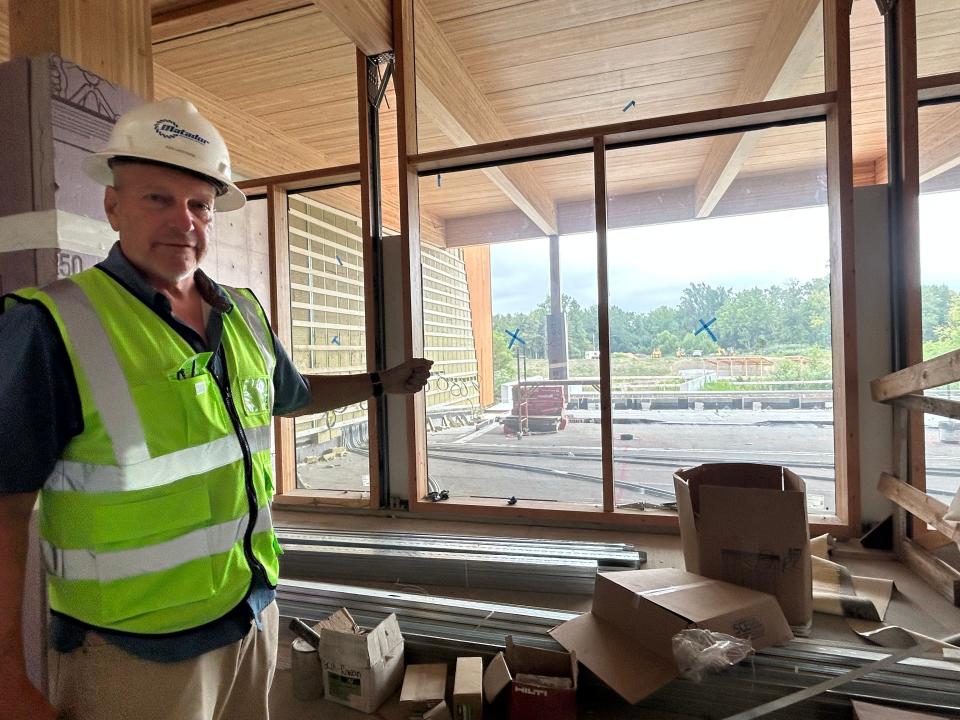
Dinosaur Coast will tell the story of the creatures in a way that is time- and place-based, with a special focus on the Eastern part of the United States. "We want people to know you don't have to travel to learn an amazing story," Lacovara said.
Other galleries will highlight prehistoric sea creatures "found right beneath your feet," he continued. "It's hyper-local."
Mini-dioramas will be integrated into walls at lower visual points to tell stories for smaller children, and research rooms will offer a place for visiting scientists and scholars to work. Interactive exhibits will highlight evolution, geology and microbiology as well. Critter Cove will let visitors observe rat colonies, feel sea animals in a saltwater touch tank and interact with "animal ambassadors."
Virtual reality headsets and haptic vests in another part of the museum will allow people to "visit" the Cretaceous Period. A Hall of Extinction and Hope, despite its seemingly paradoxical name, will bring our current crises into stark relief compared to the mass extinctions of the past — but will also offer a way forward by highlighting the people currently working around the world to stem the climate and biodiversity crises, and proposing ways ordinary people can help.
"We can use the lens of deep time to understand the past and to contextualize the future," said Lacovara.
"That's the whole message here: Discover the past and protect the future."
Phaedra Trethan has been a reporter and editor in South Jersey since 2007 and has called the region home since 1971. Contact her at ptrethan@gannettnj.com, on Twitter @wordsbyPhaedra, or by phone at 856-486-2417.
Support local journalism with a digital subscription.
This article originally appeared on Cherry Hill Courier-Post: What will Rowan's fossil park and museum look like? Here's a preview

